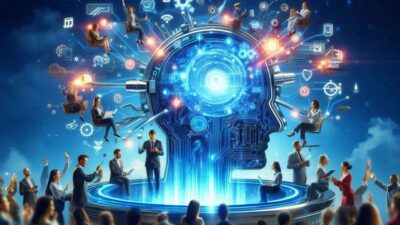
In today’s hyper-competitive business landscape, understanding what customers want before they even know it themselves has become the ultimate competitive advantage. Artificial intelligence has revolutionized our ability to anticipate customer needs with unprecedented accuracy, transforming what was once considered aspirational into operational reality. Companies leveraging AI customer behavior prediction are not merely reacting to market trends—they’re anticipating them, creating deeply personalized experiences that drive loyalty, conversion, and lifetime value in ways previously unimaginable.
The Evolution of Customer Behavior Prediction
The journey from basic customer analytics to sophisticated AI-driven prediction represents one of the most significant transformations in modern business intelligence.
From Reactive to Predictive: The Analytics Journey
Traditional approaches to understanding customers have relied heavily on historical analysis—examining what happened in the past to inform future decisions. While valuable, these retrospective methods suffer from significant limitations:
- They identify patterns only after they’ve fully emerged
- They struggle to account for rapid market shifts
- They often miss subtle behavioral signals
- They typically analyze data in silos rather than holistically
The emergence of predictive customer analytics marks a fundamental shift from asking “what happened?” to “what will happen next?”—and most importantly, “how can we influence what happens next?”
This evolution has progressed through several distinct stages:
- Descriptive Analytics: Basic reporting of historical customer actions
- Diagnostic Analytics: Understanding why customers behaved in certain ways
- Predictive Analytics: Forecasting likely future behaviors based on patterns
- Prescriptive Analytics: Recommending specific actions to influence outcomes
- Cognitive Analytics: Systems that continuously learn and adapt predictions
Organizations implementing mature AI prediction capabilities report 43% higher customer retention rates and 37% improvements in cross-selling effectiveness compared to those using conventional analytics.
The Science Behind AI Prediction: How It Actually Works
At its core, AI customer behavior prediction relies on sophisticated algorithms that identify patterns too complex for human analysis. These systems process vast datasets spanning:
- Transactional histories
- Behavioral signals (website interactions, email engagement, etc.)
- Demographic information
- Contextual factors (seasonality, economic indicators, etc.)
- Competitive dynamics
- Social sentiment
Machine learning models then identify correlations and causalities within this data to generate increasingly accurate predictions about:
- Future purchasing likelihood
- Product affinity
- Price sensitivity
- Churn probability
- Lifetime value potential
- Channel preferences
The most advanced systems employ multiple AI approaches in concert:
| AI Technology | Application in Customer Prediction | Business Impact |
| Neural Networks | Identifying complex, non-linear relationships between variables | 35-50% prediction accuracy improvement |
| Natural Language Processing | Extracting insights from unstructured customer communications | 40-60% deeper customer understanding |
| Computer Vision | Analyzing visual engagement with products and content | 25-45% improved product recommendation |
| Reinforcement Learning | Optimizing prediction models through continuous testing | 30-50% faster adaptation to market changes |
| Ensemble Methods | Combining multiple prediction approaches for superior accuracy | 20-40% reduction in prediction errors |




